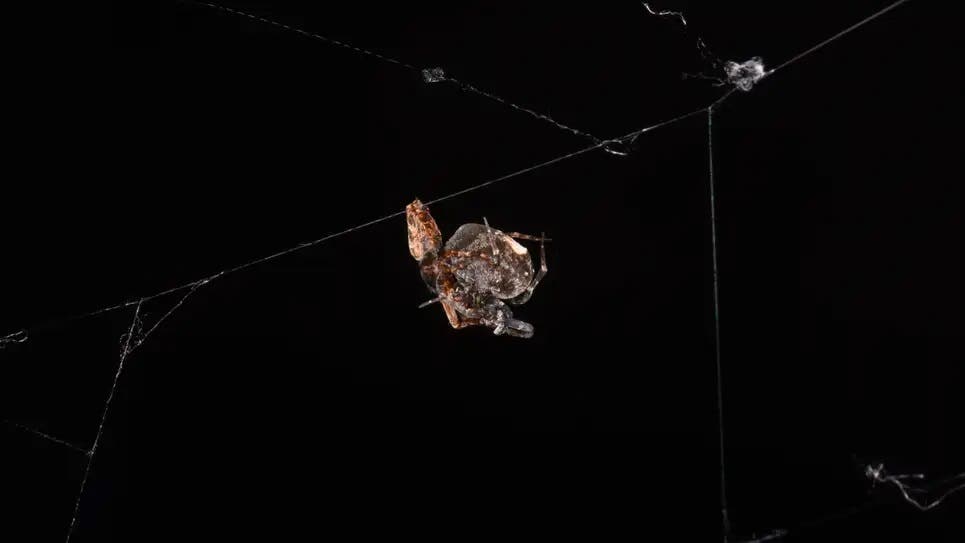In popular culture, women who murder their husbands are sometimes called ‘black widows’, in reference to the notion that those female spiders devour the males after mating. That’s actually a myth since sexual cannibalism among black widows is almost non-existent. However, it’s true that many species do actually have fatal sex lives, such as the communal orb-weaving spiders. But since evolutionary pressure is sometimes like an arm’s race, the male orb-weaving spiders haven’t been sitting idle — they’ve hatched an escape plan.
According to a new study by researchers in China, male orb-weaving spiders (Philoponella prominens) have evolved spring-like joints in their front two legs that allow them to catapult themselves off females with high velocity and out of harm’s way like a pilot in a downed jet.
Orb-weaving spiders live in communal webs of up to hundreds of individuals. Although it’s a bit crowded, the spiders live pretty peacefully with one another — until it’s mating time.
There are many things that are very atypical about these spiders. Unlike other species, Philoponella prominens doesn’t use venom to kill prey, but rather bites it to death. Their sex roles are also reversed. In nature, usually, the females choose their pick from an array of suitors. But among orb-weaving spiders, it’s the males who are the picky ones.
The reason is simple: they usually only have one shot, so the males won’t mate with just anyone. The ideal female is very well-fed, and recently molted into adulthood, which means she has plenty of resources for her eggs and she’s a virgin to boot, so there is no competition from other male sperm.
When they’re ready to mate, the females begin plucking their webs and initiate courtship to get noticed by a male. Then, right after copulation, the female will immediately attack the males, for which she no longer has any use apart from a calorie-rich meal for her and her future offspring. Few species have such high cannibalism rates.

All of this is common knowledge among arachnologists, but Shichang Zhang and colleagues at Hubei University were stunned to notice how some tiny males bounced away from their romantic encounters rather than staying complacent like a Happy Meal. No one had noticed this before.
In a follow-up investigation, the researchers observed 155 instances of successful mating, and nearly 98% of the time the male would catapult itself as far away from the female as he could. The three males monitored by the study that stayed behind were killed and eaten — but does this happen every time?
In a separate experiment, the researchers didn’t allow 30 males to jettison out of the female’s web. All were subsequently eaten, which told the researchers that the catapulting ability is integral to the male’s survival and was thus shaped by evolutionary forces.
Zooming in on the spiders’ tiny legs as they performed their catapulting motion using high-speed cameras, the researchers found that the males clocked speeds of 88 centimeters per second (2.9 feet/second) during their lightning flights that lasted only four milliseconds and an acceleration of 520 meters/second squared (1734.5 feet/second squared). To put this into perspective, if the spiders sustained that level of acceleration for a longer time, they would reach 100 km/h (60 mph) in only 0.05 seconds.
Spiders don’t actually have muscles. So in order to perform their acrobatic jumps, they rely on hydraulic pressure, shooting their body fluid into their legs, which causes them to expand really fast like an uncoiled spring. But while jumping spiders use their four hind legs to catapult, the male orb-weavers only use their two front legs.
This adaptation is the result of the two strongest drivers for evolution: survival and replication. Mate and die, don’t mate and you forfeit passing on your genes. It’s a catch-22, which the orb-weavers managed to circumvent by adapting their catapulting-enabling front feet. It’s pretty amazing, so it’s no wonder the spiders have grown cocky too. After barely escaping, male spiders will often crawl back to the same female to mate again.









